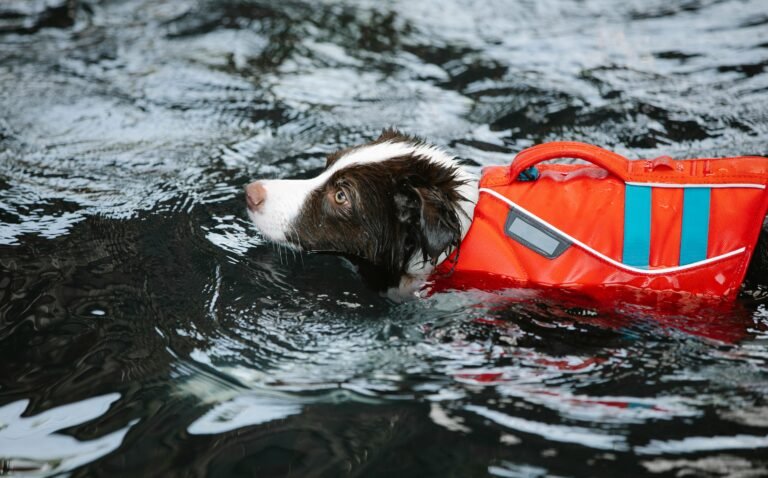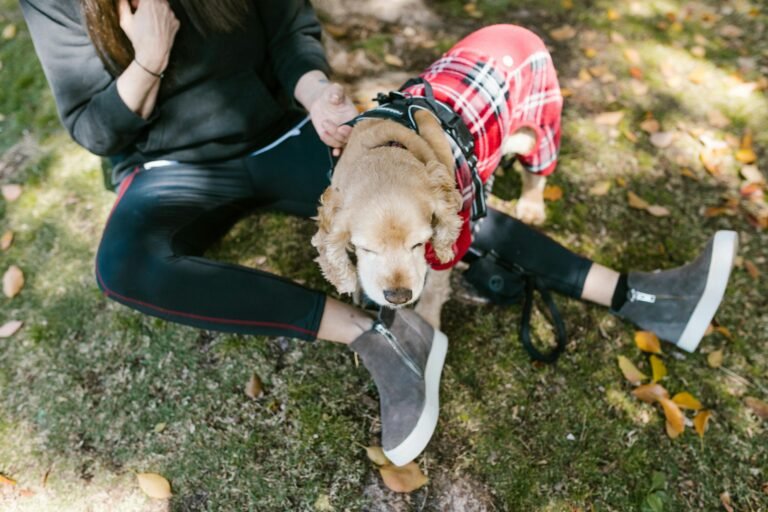It’s crucial to be prepared when hiking with your dog, as accidents can happen regardless of how careful you are. Understanding how to recognize and treat common injuries, such as cuts, sprains, or heat exhaustion, can make a significant difference in your dog’s comfort and safety. This guide will help you identify the signs of distress in your furry companion and provide practical tips on how to manage these injuries effectively, ensuring you both enjoy your outdoor adventures together.
Identifying Signs of Distress in Your Pup
Understanding the signs of distress in your dog while hiking can significantly enhance their safety and enjoyment. Any visible discomfort should prompt you to investigate further. Look out for changes in their normal behavior, such as reluctance to move, frequent stopping, or changes in their posture. Identifying these signs quickly can help you address potential injuries before they escalate.
Physical Symptoms That Speak Volumes
Physical symptoms like limping, excessive panting, or changes in vocalization can indicate pain or discomfort. If your dog suddenly starts limping or avoids putting weight on a paw, there may be an injury present. Keep an eye on their breathing patterns and temperature, as excessive panting can signal overheating or stress.
Behavioral Changes as Warning Signals
Behavioral changes often provide early warnings of distress. If your dog, typically enthusiastic and playful, suddenly appears withdrawn or hesitant, this could be a sign that they are in pain or feeling unwell. Increased aggression or irritability can also indicate discomfort, as animals may react defensively when they are hurt. Watch for signs that your dog is avoiding activities they usually enjoy, such as climbing hills or jumping over obstacles.
Persistent signs of distress during your hike should not be overlooked. If your pup is suddenly disinterested in their surroundings, lagging behind, or refusing to engage with you, these behaviors may indicate they are feeling unwell or in pain. Additionally, if your dog shows signs of excessive drooling, loss of balance, or abnormal sensitivity to touch, it’s imperative to assess their condition closely. Understanding these behavioral shifts allows you to respond quickly to their needs, ensuring your adventure remains enjoyable and safe for both of you.
The Common Hiking Hazards for Dogs
Hiking with your dog presents various hazards that can lead to injuries or health issues. From uneven terrain to extreme weather conditions, each trail can pose unique threats. Understanding these risks allows you to better prepare and protect your furry companion while enjoying the great outdoors. Recognizing potential hazards enables you to address them promptly and ensure that both you and your dog have a safe hiking experience.
Terrain-Related Risks: Scrapes and Sprains
Uneven ground, sharp rocks, and steep inclines can easily lead to scrapes and sprains for your dog. As they navigate through challenging trails, their paws can get wounded, and joints may become strained. Keeping an eye on your dog’s footing and the terrain will help mitigate the risk of injury. In more rugged areas, consider investing in dog booties to protect their paws from cuts and abrasions.
Environmental Dangers: Heatstroke and Allergies
Extreme temperatures can be particularly harmful to dogs, causing heatstroke during hikes in warm weather. Long exposure to the sun or strenuous exercise can elevate their body temperature dangerously high. Allergies, from pollen to toxic plants, may trigger reactions that cause discomfort, itching, or even gastrointestinal issues. Familiarizing yourself with the symptoms of heat-related illnesses and potential allergens in the area is vital for your dog’s well-being.
Heatstroke occurs when your dog becomes overheated, leading to symptoms like excessive panting, drooling, or lethargy. It can escalate quickly, damaging the brain and other organs. To prevent heatstroke, keep your hikes during cooler hours, provide plenty of water, and give them breaks in shaded areas. Allergies can manifest in various ways, from sneezing to skin irritations, so monitoring your dog’s behavior while hiking is necessary. Be aware of common allergens in the environment and consult your veterinarian for preventive measures or treatments if your dog displays signs of an allergic reaction.
First Aid Essentials for Canine Injuries
Equipping yourself with first aid crucials can make a difference in the event of a hiking injury. Having the right supplies ensures you can tend to your dog effectively, alleviating pain and preventing complications from worsening injuries. Focus on items that address cuts, sprains, and insect bites, being prepared for the most common scenarios. Being proactive with your dog’s health can lead to quicker recovery times and ensure more enjoyable hiking experiences.
Creating Your Dog’s Hiking First Aid Kit
Your dog’s hiking first aid kit should include key items like gauze pads, antiseptic wipes, adhesive tape, and a pair of scissors. Essential medications, such as anti-inflammatories or antihistamines, may also be advantageous. Organize the kit in a waterproof bag, ensuring that all items are easily accessible on your hikes. Customizing your kit based on the specific needs of your dog, such as breed and age, will enhance its effectiveness and readiness for any situation.
Step-by-Step Treatment for Common Injuries
Understanding how to treat common injuries on the trail can empower you to act quickly. For example, a cut may require cleansing and bandaging, while a sprain might benefit from rest and cold compresses. Familiarizing yourself with these basic protocols enhances your confidence and prepares you for any unexpected situations. A clear understanding of the steps to take can drastically improve your dog’s comfort and reduce recovery time.
Step-by-Step Treatment for Common Injuries
| Injury | Treatment |
| Cuts | Clean the wound with antiseptic wipes, apply gauze, and secure with tape. |
| Sprains | Limit movement, apply a cold compress for 20 minutes, and seek veterinary advice if swelling persists. |
| Insect Bites | If bitten, apply a cold compress and monitor for signs of allergies or infections; consult a vet if symptoms worsen. |
Familiarizing yourself with the step-by-step treatment methods provides you with a strong foundation when dealing with injuries. For instance, injuries from rough terrain or sharp objects may require immediate attention. Handling the situation calmly and efficiently can prevent further harm and discomfort to your dog. Always observe any changes in your dog’s behavior post-treatment, and don’t hesitate to consult your veterinarian for more severe or persistent injuries.
Additional Treatment Information
| Observation | Always keep an eye on your dog for changes in behavior or mobility. |
| Emergency Signs | Be aware of symptoms like excessive bleeding, limping, or signs of pain indicating the need for more urgent care. |
When to Seek Veterinary Care
Identifying when a dog’s injury necessitates veterinary care can be challenging. If your dog shows persistent symptoms such as severe limping, excessive bleeding, difficulty breathing, or appears to be in significant pain, it’s time to seek professional help. Additionally, if you notice any signs of infection, like swelling, discharge, or fever, don’t delay in contacting your vet. Timely intervention can prevent complications and ensure your furry friend remains healthy after your adventure.
Recognizing Serious Conditions That Require Attention
Look for alarming signs that indicate a serious condition, such as loss of consciousness, persistent vomiting, or uncontrollable bleeding. Breaks or fractures may manifest as your dog refusing to bear weight, while allergic reactions can lead to swelling around the face or mouth. If you observe any of these symptoms, prioritize veterinary care without hesitation to safeguard your dog’s health.
Communicating Effectively with Your Veterinarian
Clear and detailed communication with your veterinarian plays a pivotal role in your dog’s treatment. When discussing your dog’s condition, provide information on the incident, your dog’s symptoms, and any first aid measures you’ve implemented. Be prepared to answer questions about your dog’s medical history, allergies, and regular medications. This comprehensive overview allows the veterinarian to make informed decisions, facilitating a quicker and more effective treatment plan.
Efficient communication empowers both you and your veterinarian in addressing your dog’s needs. Documenting symptoms, taking notes on your dog’s behavior, and sharing accurate information about the hiking conditions can make all the difference. Additionally, don’t hesitate to ask questions regarding diagnosis or treatment options; understanding your pet’s health enhances your ability to care for them ongoingly. Properly relaying information contributes significantly to any necessary evaluation and can expedite the recovery process.
Preventive Measures for Future Hikes
Implementing preventive measures can significantly reduce the risk of injury during hikes. Start with proper planning—be mindful of the trail difficulty, weather conditions, and your dog’s physical condition. Regular vet check-ups can help identify any underlying health issues, ensuring that your furry companion is in peak condition for outdoor adventures.
Training and Conditioning Your Dog for the Trails
Gradually conditioning your dog for hiking is key to preventing injuries. Begin with shorter walks on varied terrain before increasing distance and difficulty. Incorporate exercises that build strength and endurance, such as running and hiking on hills, to improve your dog’s fitness level.
Gear and Technology to Enhance Safety
Equipping your dog with appropriate gear can enhance safety during hikes. Invest in a well-fitting harness to offer support, as well as booties for paw protection against rough terrain or extreme temperatures. Additionally, using a GPS tracker allows you to keep tabs on your dog’s location, ensuring peace of mind on adventures.
Exploring gear options goes beyond mere harnesses and booties. Consider a hydration pack specifically designed for dogs, ensuring they stay hydrated on the trail. First aid kits tailored for pets should also be included in your hiking gear—stocked with crucials like bandages, antiseptic wipes, and tweezers. Technology like reflective leashes and collars enhances visibility during low-light conditions, while portable water bowls or collapsible food containers keep your pooch comfortable and nourished. Prioritizing gear and technology not only promotes a safe hiking experience but also maximizes enjoyment for both you and your dog.
To wrap up
With this in mind, recognizing and treating common injuries in your dog while hiking is necessary for their well-being and your peace of mind. By familiarizing yourself with typical issues such as cuts, sprains, or heat stroke, you can promptly address any concerns that arise during your adventure. Always carry a basic first aid kit, know the signs of distress, and use preventative measures like paw protection. Your dog’s health and safety depend on your attentiveness and preparedness, ensuring that you both enjoy many wonderful hikes together.






